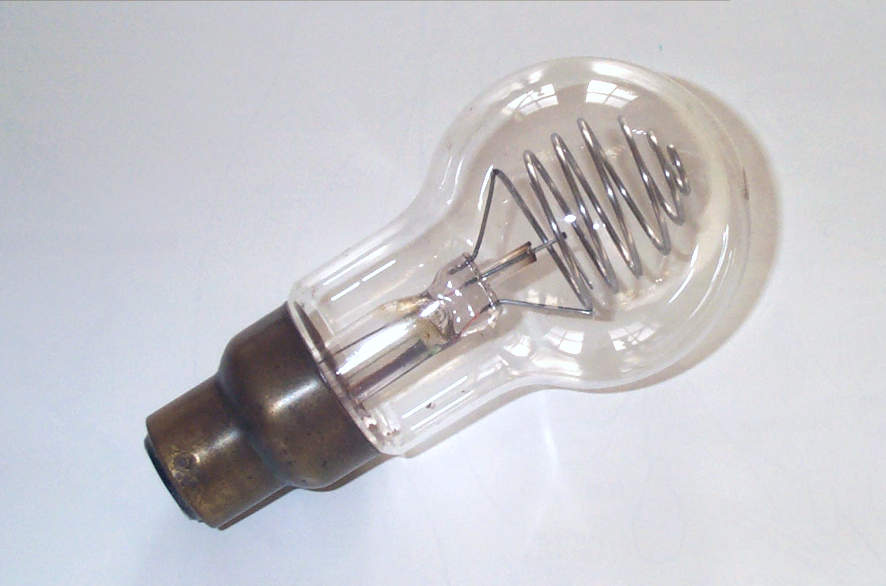
|
Osglim Beehive Neon Lighting Lamp |

The 5-watt Lighting lamp employs a beehive shaped coil of swedish iron wire mounted above a flat disc of the same metal. Swedish iron is the preferred electrode material for these lamps on account of its low rate of sputtering and ease of outgassing by bringing it to red heat during the pumping stage. Aluminium electrodes, as employed in Geissler tubes, also have a low rate of sputtering but they are not particularly suitable for use in a lamp requiring a high purity gas filling like this. The oxide film and low melting temperature makes it a difficult material to outgas.
The half-watt Indicator lamps are in small pygmy or tubular glass bulbs and generally have electrodes formed from sheet metal, either as a split disc, or a disc with an annular ring.
Letter lamps take the same format as the Lighting lamp but instead, have large parallel electrodes stamped out in the shape of a letter or number. When arranged side by side, illuminated signs could be created for shop windows etc.
All lamps incorporate a ballast resistance inside the cap and are filled with a neon-argon penning mixture for easy ignition on the mains electricity supply. Incidentally the name "Osglim" is frequently found on pre-1950's neon lamps from the GEC. In the same way that the Osram brand was used for general lamps and the Robertson brand for carbon filament lamps, Osglim was another GEC trade name used exclusively for neon glow lamps.

| Manufacturer: | The General Electric Company of England PLC | |
| Lamp Power: | 5 Watts | |
| Lamp Current: | 21 Milliamps | |
| Lamp Voltage: | 230-240 Volts | |
| Cap: | B22d/30x28 | Brass + Vitrite |
| Bulb Finish: | Clear | Soda lime |
| Bulb Type: | GS-55 | GS-14 (in eighths/inch) |
| Overall Length: | 115 ± 5 mm | |
| Light Centre Length: | ||
| Electrodes: | Beehive Spiral and Plate, Swedish Iron | |
| Atmosphere: | 99% Neon, 1% Argon | |
| Luminous Flux: | Not Published | |
| Luminous Efficacy: | Not Published | |
| Colour Temperature & CRI: | CCT: | CRI: |
| Chromaticity Co-ordinates: | CCx: | CCy: |
| Burning Position | Universal | |
| Rated Life: | Not Published | |
| Factory: | Hammersmith | England |
| Date of Manufacture: | January 1945 | |
| Original / Present Value: | £4s 6d (1951) | £3.75 (2001) |